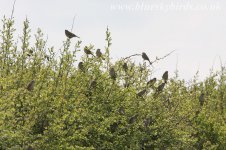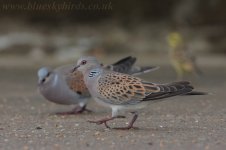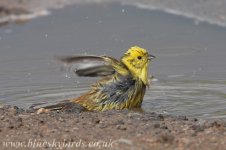Hi Jim
The Sea Palling paddocks at various times in the day had four Blue-headed wagtails (
M. f. flava) in it and there were several others around in east Norfolk, so the other you thought was this, is quite likely to have been. These originate from mainland Europe. There was also one very pale headed one, which superficially resembled Sykes's Wagtail (
M. f. beema), which breeds near the Caspian Sea and east towards India. The head was too pale for this though. I suspect it was what people refer to as "Channel" Wagtail (basically a hybrid between our Yellow Wagtails (
M. f. flavissima) and Blue-headed Wagtails as occurs on the Channel Islands. The Sea Palling bird had a very white throat, which neither Blue-headed nor Yellow usually have (although Blue-headed sometimes does), which seems a bit odd. That said, they can be quite variable, and a presumed Channel Wagtail at Kelling last year looked almost identical to the one at Sea Palling. A photo of the one at Kelling is about half way down on this page:
http://www.birdingworld.co.uk/CleySpring2007.htm






